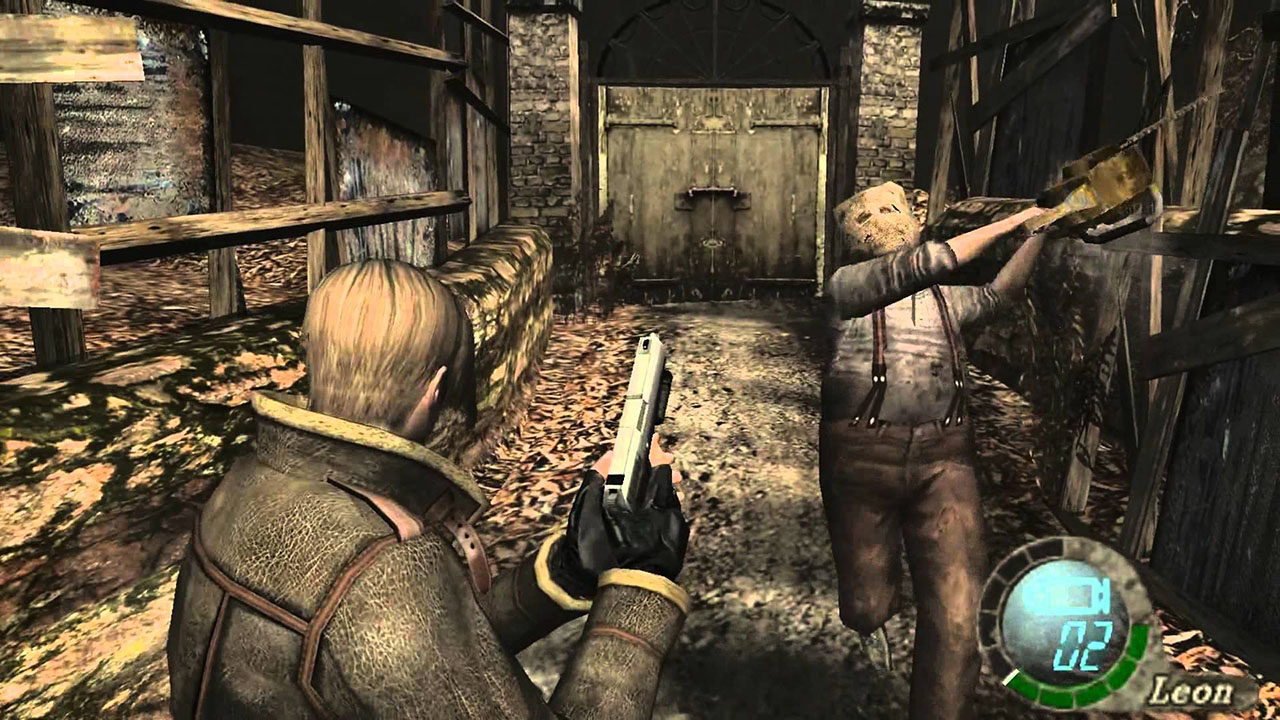
Back in 1998, I had my first encounter with the Resident Evil franchise. I rented Resident Evil 2 and got hooked. I immediately ran out and bought the game, finished it, and never played another Resident Evil game again. Well, I take that back. I started the original Resident Evil but never finished it. I did, however, play Dino Crisis, which was a similar game. They all started to feel the same: Same awkward, frustrating controls. Same pre-rendered backgrounds.
In 2004, Resident Evil 4 made its debut on the Nintendo GameCube to rave reviews. The trademark annoyances of a Resident Evil game had for the most part been chucked out the window and a re-tooled control scheme, improved graphics, and a new emphasis on action took their place. At the time, I didn’t own a GameCube, so I skipped it. When the game was released on the PlayStation 2 in late 2005, I didn’t give it a second thought. Then the price dropped to $19.99 as it became a “Greatest Hits” title for the platform. I finally decided to see what all the hoopla was about.
Four years after the events in Resident Evil 2, Resident Evil 4 takes place in the Spanish countryside. Leon S. Kennedy, who was the rookie cop in Resident Evil 2, is now a U.S. government agent. As the game begins, Leon’s been dispatched to retrieve Ashley Graham, the president’s daughter, who’s been kidnapped by unknown forces. As he searches for clues, he comes across a village of zombified townspeople and, as he searches for Ashley, he must also figure out how to avoid death at their increasingly mutated hands.
For a PlayStation 2 game, the graphics are gorgeous. After playing quite a few Xbox 360 games recently, Resident Evil 4 did not stand out as an ugly game. It supports progressive scan and a widescreen aspect so, even on my HDTV, it looked quite respectable.
Resident Evil games, as I’ve previously mentioned, had been well-known for their frustrating control schemes. Resident Evil 4 features a new and less-frustrating control mechanic. However, it’s still somewhat restricted. If you’re used to playing third-person action games that give you free reign to do as you please, the button combinations required to get Leon to aim his weapon and look around will, initially, feel awkward. As the game progresses, it begins to feel less restrictive but never feels completely natural.
While I won’t reveal any plot-specific spoilers, the game throws a lot of interesting enemies and situations at the player. Thankfully, the puzzle-solving elements that were a large part of Capcom’s earlier survival horror games have been given a backseat in favor of much more action-oriented elements. Ammunition, once a rare commodity in the Resident Evil universe, is plentiful and you’ll never really find yourself in danger of running out completely.
The item management has also been improved. By giving the player a large (and upgradable) attache case in which to carry items, there is no time wasted trying to find typewriter ribbons to save or worrying about stashing items in a safe. You will occasionally have to decide not to pick up an item if you run out of room in the case but, thanks to the inclusion of a merchant who appears at various points throughout the game, you can always stock up on items at a later time. (Strangely, the merchant never sells ammo, but he will buy your extra ammo.)
Another new element are the Shenmue-like Quick Time Events, which require the player to stay frosty even during in-game cinematics. These unannounced events will require the player to quickly press a combination of buttons (usually L1 and L2 or X and O) to avoid getting shot, punched, or squished. If you do manage to get killed, the game doesn’t make you backtrack too much. Usually, you’ll restart close to where you died. (Just for the record, I died 69 times according to the game’s summary at the end.)
Resident Evil 4‘s best asset, however, is the world in which it takes place. The remote countryside setting, which is beautifully portrayed by the graphics, gives the game an atmosphere of dread that fits perfectly. When coupled with the bizarre, yet compelling, story-line, Resident Evil 4 is simply classic.
Aside from the initially awkward controls, I can’t think of any major problems with Resident Evil 4. It provides roughly 20 hours of solid entertainment for a great price if you just play the main story-line. An additional set of missions, “Separate Ways,” featuring Ada Wong, is also available once you complete the main game. Their inclusion makes the whole package an even greater value.
With a combination of a great story, impressive last-generation graphics, and a killer atmosphere, Resident Evil 4 gets my highest recommendation.
10 out of 10.

